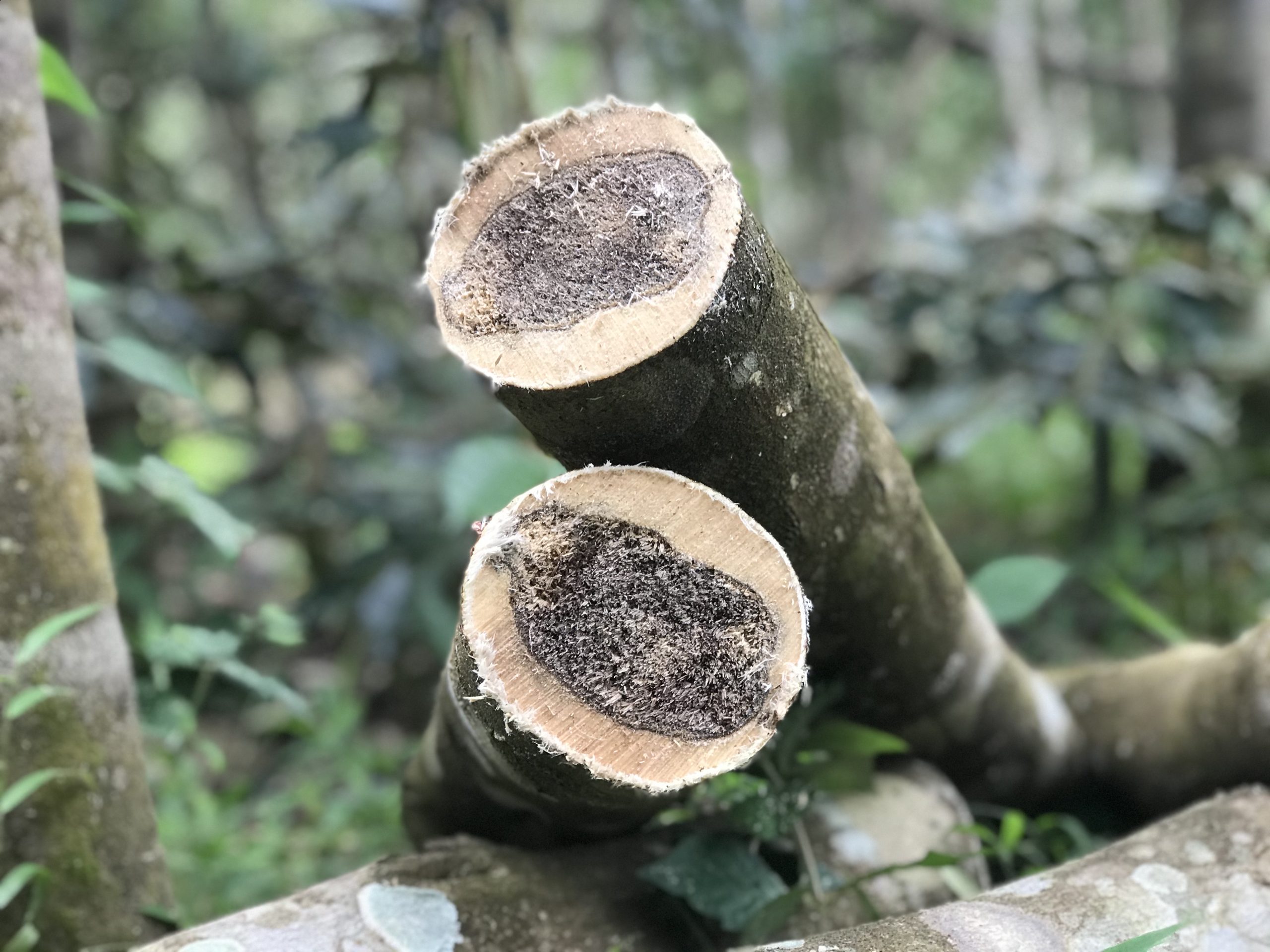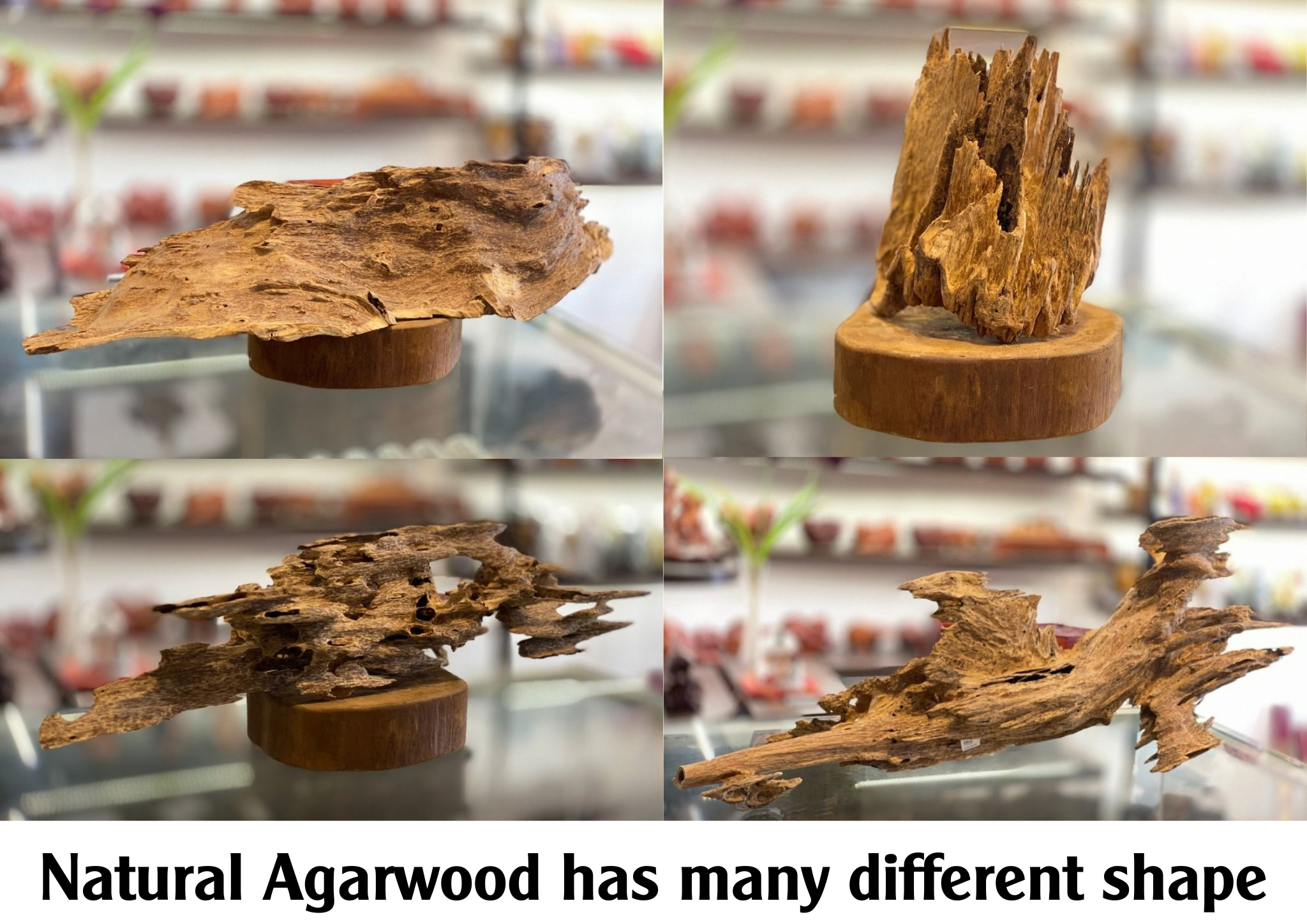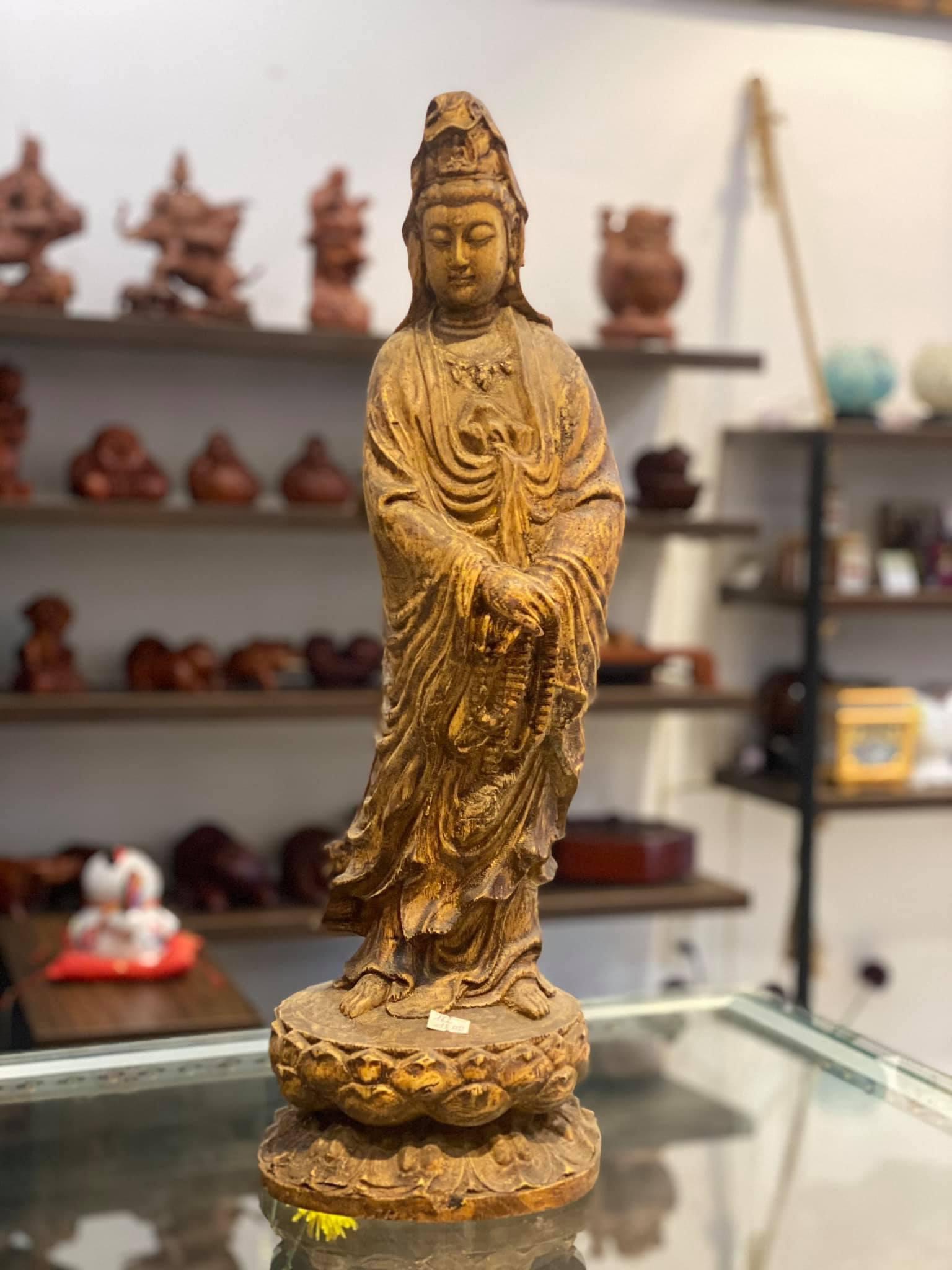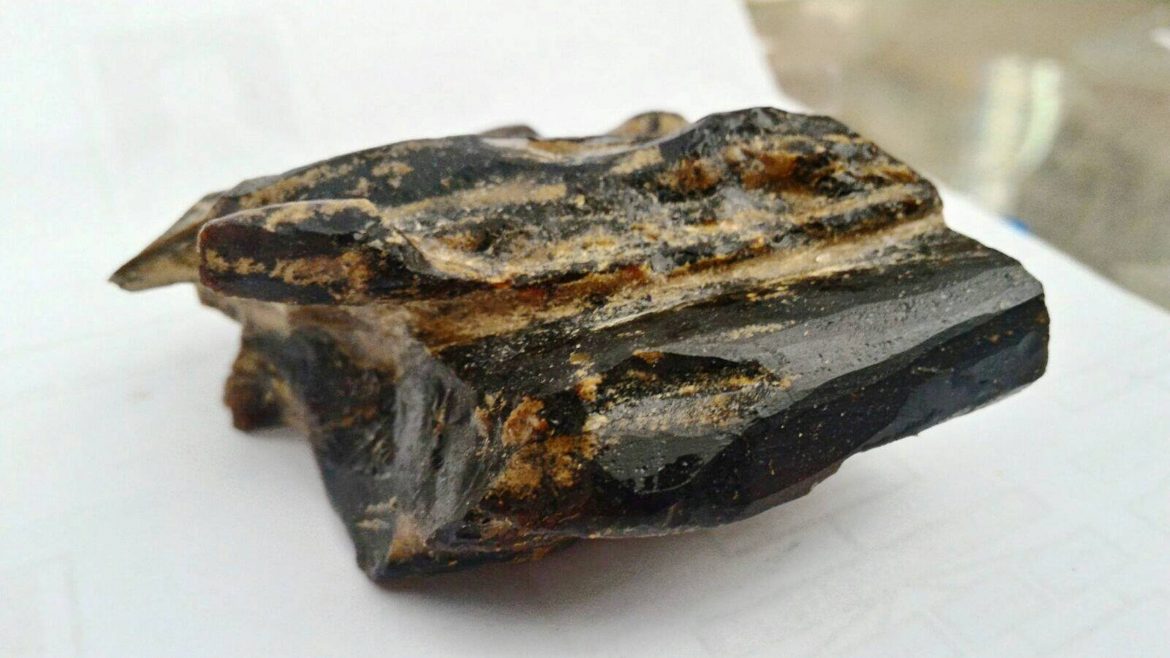Knowledge
Why agarwood is expensive
Agarwood is a precious wood with many uses, popularly applied in furniture making, and handicrafts with a value of up to hundreds and billions of dong. So why agarwood is expensive and would it be the most expensive wood in the world? Find out more along with Phuc Linh Agarwood through the article below.
What Kind Of Wood Is Agarwood?
Many people say that agarwood is an excellent wood and it is exploited from the very precious agarwood tree. This is not 100% true because the agarwood tree does not exist at all. In fact, the thing that creates the correct agarwood is called the Do Bau tree, people spread this term because they think this is originally a type of wood, and the wood is harvested from the tree, so they casually call it agarwood tree. Agarwood was regarded as the aromatic produce of riches and elegance as early as 1,400 BC and has left an imprint on many ancient societies.
According to folk beliefs, the scent of heaven blends into the wound of the Do Bau tree (a small, light tree with almost no value), combined with the resin over time to form agarwood. In fact Agarwood is actually the wood that contains many aromatic resins of the Do tree. This resin must be secreted from the natural wound of the tree, be it due to the impact of insects, lightning, or climate … And absolutely no impact from humans.

Do Bau tree has the scientific name Aquilaria, is distributed mainly in the tropical forests of South Asia and Southeast Asia. In our country, agarwood is found most often in Quang Nam, Quang Ngai, Khanh Hoa, Dak Lak…During the growth process, due to the impact of the environment, the tree will often be infected. At this time the trunk accumulates a form of resin and gradually spreads throughout the trunk causing a change in color, shape, and aroma. This process has formed Agarwood.
It takes 10 to 15 years or even a few decades for the Do Bau tree to form Agarwood. During that time, the trunk is affected by natural influences such as cracking, decay, etc. caterpillars, and parasitic molds… then, the tree will secrete the resin and change the substance to become Agarwood. These are the 2 required elements to be able to create Agarwood. Depending on the proportion of each factor, the quality of Agarwood will be different.
Morphological Characteristics, Growth Of Agarwood:
- Morphological characteristics: Agarwood does not have a definite shape, but depending on the age and place of development, each type will have a different shape. The way to identify agarwood is to find Do trees damaged by wind, bombs and bullets.
- The growth of agarwood: First, when the Do tree is sick, it will be yellow and gradually smaller, tumors will gradually appear, and red-brown spots are present along the trunk.. The wood will become a stone-like substance. gravel and also showed wrinkles on the wings of a falcon. Agarwood is often found on diseased Do trees after 10-20 years or a longer time, the older the agarwood, the more precious and quality it is.
Distribution:
A question often asked is: “Where is Agarwood usually distributed?” Agarwood is widely distributed throughout Asia, typically in Vietnam. In our country, agarwood is also found in many places such as
- North: Hoang Lien Son, Vinh Phu, Hoa Binh, Ha Tay,…
- Central Region: Nghe An, Quang Binh, Ha Tinh, Thanh Hoa, Quang Tri,…
- Central Highlands: Gia Lai, Kon Tum, Dak Lak.
- South: Binh Thuan, Lam Dong, Binh Phuoc, Dong Nai,…
Why Agarwood Is Expensive?
Agarwood’s value is derived from pain – The natural process of generating agarwood is one of the reasons why it is so valuable. Agarwood is mother nature’s lovely child, born from the wounds on the trunk of the Do Bau tree.
Agarwood and Aloes are usually two pricey items, with hundreds of billions of dong traded all over the world. This has produced a global shock and has driven the locals to hunt incessantly. The price of gold fluctuates on worldwide markets, but the price of agarwood has never fallen. Is there any justification for the high cost of Agarwood?
1. Rarity:
Because of its difficult and unusual configuration process, agarwood is more expensive than gold. Agarwood is a wonderful kid born from the incisions on the trunk of the Do Bau tree. It is the denaturation, and buildup of tree sap as a form of resistance to defend themselves from Do tree. The influence of mold, scratches and natural calamities might last from many decades to hundreds of years, depending on the quality of the agarwood. Some individuals have spent their entire lives searching for agarwood and have never seen it with their own eyes. Due of its scarcity, agarwood is more costly than gold. Agarwood comes in a variety of grades and varieties, depending on the quality of the agarwood resin.
Agarwood is extremely difficult to locate in nature due to the lengthy process of formation. Because agarwood is not found in every tree trunk. Finding agarwood, in particular, is pretty difficult. Individuals hunting for agarwood face several hurdles from Mother Nature, including thousands of rivers and mountains, thick woods, and poisonous water. Discovering Agarwood is a two-edged sword. Your opportunity will transform your life if you pass and bring back valuable wood. But, if unsuccessful, life will most likely be traded. As a result, agarwood is becoming increasingly valued.

Our ancestors used to exclusively find agarwood from dead trees, decomposing wood, or previously damaged trees. In the late 1980s, a number of persons who specialized in agarwood extraction in Tien Phuoc (Quang Nam), Hoai An (Binh Dinh)… took the Do Bau tree from the natural forest to grow in the home garden, then discovered a means to make agarwood on the trunk of the Do tree.
Although the nature of the problem of creating agarwood is unknown, they consciously impact the trunk of the Do Bau tree, thanks to experience, by carving rectangles into the trunk of the tree, drilling into about 5cm deep, then 7 coming back 10 years later to exploit contemplation in these influential identities. The development of man-made agarwood has contributed to agarwood being more affordable and readily available in people’s lives.
2. Processing:
- To remove the wood components from the Agarwood, the artisan will utilize a set of tools known as Xia. Workers in this procedure must be extremely competent and professional. To be able to swiftly and correctly undertake agarwood separation processes.
- Following the collection of Agarwood from the Do tree, the blocks, lumps, bars, and logs containing Agarwood powder must be processed. Every craftsman has their own set.
- Xia is a tool for processing art. This pack is made up of four to six components. From as little and narrow as a hook, a bat for cleaning a hairdresser’s ears, to as large as a carpenter’s chisel. All must be sharp in order to scrape the agarwood near the Do tree. (Excerpt from writer Nguyen Tri’s novel Golden Beach, Gemstones, Agarwood)
- When manufacturing Agarwood, artisans must pay particular attention to the shape and size of the agarwood, so that after cleaning the white wood, the piece of agarwood is still in shape, not broken, even if only a little portion, a scratch created by a knife that diminishes the agarwood’s value.
3. The usages of Agarwood
The use of Agarwood is one of the reasons why Agarwood is so expensive. Agarwood, according to scientific research, can assist enhance health, aid in the treatment of arthritis, aid in digestion and central nervous system activity,… Agarwood aids in relaxation and stress reduction. sleep soundly,… Agarwood is used in feng shui for devotion and spirituality. Air purification, exorcism…
The Process Of Creating And Forming Of The Rarest Types Of Wood:
1. The formation of agarwood in nature:
The natural formation of Do Bau tree is the change of wood particles due to pathological effects by cracks, the invasion of fungi, etc., which occur naturally from year to year. When infected in a certain area, the tree will accumulate resin to bandage the wound, as a self-resistant ability to fight the disease.
In nature, not any tree trunk has agarwood – aloes, only diseased trees contain agarwood in the core. In this part, if we look closely through the magnifying glass, we can see that the cell wood deforms, loses the wood element, contains myrrh (essential oil), it turns into irregular, convex, concave shapes with vertical branches, in the color space. it’s the aloes. Around aloes, the wood is also more or less metamorphosed, which is Toc. When burned, it gives off an aroma (used as agarwood incense).
Aloes are usually found in diseased trees after 10-20 years or longer. Diseased plants have yellow leaves, the trunk has many tumors, and red-brown spots appear. The wood becomes a pebble-like luster with wrinkles like the wings of an eagle, which are trees with a deep and strange tone.
2. Agarwood Cultivation Technique:
- Currently, the demand for agarwood in the world is increasing, while the amount of natural agarwood is almost exhausted due to indiscriminate exploitation. The Aquilaria variety for agarwood is listed in the IUCN Red List (The International Union for the Conservation of Nature and Natural Resources) and several species – including the Aquilaria tree – are considered endangered and need to be conserved and recovered.
- In Vietnam, along with the propagation of Do Bau trees for planting (in household gardens or on farms…) the cultivation of agarwood has also appeared in some localities such as Ha Tinh, Quang Nam, Dong Nai, Khanh Hoa, Phu Quoc, Binh Dinh…But this is a spontaneous way of doing things according to each person’s experience. There are places where people use pins or triangular iron samples which are cut from old barrels to drive directly into the trunk of the tree. On the other hand, there are places where people use electric drills to drill into the tree trunks in many different locations, then inject chemicals into the drilled holes. These chemicals can be dilute H2SO4, HCOOH, KMnO4, HCl,NaHSO3, FeCl3 or FeSO4…
- In Vietnam, The Rainforest Project (TRP) – is a Dutch NGO, funded by the European Union – in association with Vietnam National University, Ho Chi Minh City. has conducted research on different methods of growing agarwood on Do Bau trees in two localities, An Giang and Kon Tum from 1992 to the present. This study yielded many very positive results, which showed that the formation of agarwood can occur on 4-5 year old pupa trees after 6 to 17 months of catalyst treatment. Scientist Nguyen Hong Lam (Specialty Forestry Research Center) has researched Lt probiotics and this product is very promising in practical application. In addition, a number of scientists in Vietnam, belonging to different organizations, are also continuing to research this topic.
However, the results of the aforementioned research have not been published so far, perhaps it is a matter of exclusive technical and professional know-how.
Values of Agarwood:
- According to oriental medicine, agarwood has the effect of loading the kidneys and curing a number of diseases such as shortness of breath, asthma, chest pain, etc. In Western medicine, they form drugs to cure diseases of nausea, diarrhea, and heart failure …
- Besides, it also helps reduce stress, relax the mind, and sedation through its pleasant aroma. Therefore, they are produced by many places to make essential oils and perfumes of agarwood to serve the life and needs of many people.

- The energy of Agarwood is extremely large. If purchased and displayed in the workplace or living room, it will help stimulate, attract, and increase prosperity and fortune for the owner. In addition, many people believe that they also have the effect of removing bad and negative energy. Today, in order to meet the needs of customers, they have been made into various types of jewelry. The most prominent of which is the bracelet. In addition to helping to bring beauty and serenity, it also helps us to have a lot of luck and peace in life.
How Much Does Agarwood Cost?
Natural Agarwood is considered to be of much higher value and quality than Planted Agarwood. Therefore, the price of Natural Agarwood is much higher than that of Man-made Agarwood. On the market today, there are many types of Agarwood from many regions. Each region also has different agarwood species. The quantity and quality of the Oil is the determining factor in the quality of Agarwood. Evaluation of Agarwood also requires people to have a lot of practical experience.
The Price Of Natural Agarwood:
Natural Agarwood currently has many prices depending on where the Agarwood product comes from and what grade it is classified into.
If the same grade of Agarwood, the price is arranged from low to high as follows: Agarwood from Malaysia, Agarwood from Indonesia, Agarwood from Laos and the highest one is Vietnamese Agarwood. In addition, the price must also include what kind of Agarwood, whether it is Natural Agarwood or not
Because the value of natural Agarwood is high and increasingly rare, the price of Natural Agarwood is pretty high. Vietnamese Natural Agarwood costs up to tens of billions.
The Price Of Man-made Agarwood (Planted Agarwood):
Planted Agarwood is also classified according to many levels of Toc, Agarwood Chunks or Agarwood Chips.
The price of Planted Agarwood is cheaper than Natural Agarwood, but it is also quite expensive and depends on the growing region. The price of high-quality Agarwood chunks in Quang Binh and Nghe An area is also up to several tens of millions of dong/kg.
The Price Of Indonesian Agarwood:
Indonesian agarwood is also widely used to make fine arts and jewelry because of its hard, heavy, dark color features
The source of Indo Agarwood is quite rich because the area has many islands, so the price fluctuates sharply. The current price of Indonesian Agarwood is from 200 USD to 70,000 USD depending on the type.
The Price Of Aloes:
Aloes is the highest quality of Agarwood. In Aloes, there are also many different types: Green, Iron, Purple and Black. Currently, Aloes are still very rare and is purchased by traders. Chinese and Taiwanese Agarwood traders, when they hear that there are Aloes anywhere, will come and buy them at all costs. There is a type of Aloes that has now traded up to a price of over 50 billion VND/kg.
Which Is The Most Expensive Type Of Agarwood?
Aloes is ranked as the most special and rarest type of wood and have the highest value on the market today because of their scarcity and difficulty in exploitation. That is why the price of Aloes is very high, possibly up to several hundred million or billions of dong. Aloes and Agarwood are both formed from the wound of the Do Bau tree caused by insects or the environment. However, not every Do tree that is created Aloes. It has the highest oil quantity of all types of Agarwood. With its soft and flexible nature, Aloes’ scent is full of spicy, bitter, sweet, light woody aromas. When you put it on the tip of your tongue, you will feel numb and maintain a numb state for a long time. When burning, it gives off a blue smoke, flying straight and long up.

Aloes are classified into 4 main types, depending on the shades as well as the oil.
- Black: Has a black color, and looks like tar, the oil blends into both the hardwood and heavy wood.
- Purple: Has a hard and heavy oily yellow color.
- Green: Has purple-green color, more oil is soft, and less oil is hard and dry.
- Iron: It is grayish-brown in color, surrounded by a layer of fine white sugar clinging to it, containing a lot of essential oils, and soft. This type is extremely rare, and not seen much in the market.
Aloeswood contains a high amount of oil and sinks in water as well as depending on the size, the price of agarwood varies. They usually range from 8 billion to 16 billion for 1kg of wood depending on the type. The current aloeswood price fluctuates from 2 billion to 6 billion for 1kg of wood that is not submerged in water.
How much the cost depends on the volume and quality of the wood block. The price of aloes is increasingly discussed and received a certain amount of attention. The prices above are for reference only. In fact, how much it costs depends on the time as well as the rarity and requirements for wood characteristics from the collector.
References Of Some Of The Most Expensive Wood:
African Blackwood
African Blackwood is one of the world’s hardest and densest woods, and it is mostly utilized for musical instruments. It is regarded as the most costly wood in the world because not only is it difficult to handle with hand or machine equipment, but its trees are already endangered.
But, as pricey as it may appear, African Blackwood is well worth the investment. It is more stable and resistant to warping, and it has a high decay resistance rating.
Sandalwood
Sandalwood is the world’s second most costly wood and is commonly utilized in the cosmetic business, particularly in fragrances. Sandalwood oil is popular because of the rich, creamy, and long-lasting aroma it emits.
Regrettably, the output of Sandalwood has declined while demand has increased. It is on its road to extinction, which is why Sandalwood is so pricey.
Pink Ivory
Pink Ivory, commonly referred to as Red Ivory, is an African wood found in Zimbabwe and Mozambique, South Africa. Pink ivory wood is mostly used to produce billiard cues, knife handles, and occasionally for medical purposes. It is extremely robust and resistant to decay because to its extremely high wood density.
While Pink Ivory is very abundant in some regions of South Africa, others argue it is “rarer than diamonds,” which is one of the reasons it is so pricey.
Purple Heart
Purple Heart wood, sometimes known as Amaranth, grows abundantly in several regions of Central America. It is rather unusual, exceedingly resilient, and resistant to decay and most insect assaults, which contributes to its high price. It is also water-resistant, which makes it popular for boat decks and flooring.
Nonetheless, the fundamental reason for its high price is its rarity. Purple Heart is really a brown color. Nevertheless, when the tree is chopped down and exposed to UV radiation, the wood becomes purple. Purple Heart is also extremely difficult to deal with since it leaks resin when heated with dull tools, which might block the machine
Lignum Vitae
The national tree of the Bahamas, Lignum Vitae, is the most difficult and time-consuming wood in the world. This wood was used to make the bearings for the world’s first nuclear-powered submarine. It also includes natural oils, which cause the bearings to self-lubricate, giving it great wear resistance.
Lignum Vitae has unfortunately been overexploited to the point of extinction. It is currently listed as an endangered species.
Bubinga
While Bubinga is a simple wood to deal with, it is well-known for making high-quality furniture and equipment, which makes it expensive. It is also extremely durable, as it is resistant to termite and marine borer assaults.
Agarwood
Agarwood is well-known for its tea, oil, and scent. Its high price is due to its extremely high demand and exceptional rarity – it is one of the world’s rarest trees.
Dalbergia
Dalbergia is a hard, strong, thick, and uncommon wood. It is commonly utilized to build sports equipment and high-quality furniture. It is so pricey because it is difficult to work with. Its sawdust can be toxic to humans, which is why some individuals refuse to deal with Dalbergia wood.
Bocote
Bocote is well-known for manufacturing excellent furniture and stunning flooring. With its wonderful zebra-like contrasts and striking figure, this wood is guaranteed to draw attention to your home design.
Conclusion
Phuc Linh Agarwood – the producer and trader with more than 40 years of experience in the profession, sharing knowledge from practice. Hopefully, through the above useful information, readers can gain general knowledge about some of the most expensive wood as well as the rarest types of wood. If you need more advice in this field, please contact us through the information:
CHAU THONG MANUFACTURING – TRADING AND SERVICE COMPANY
Manufacturer and Wholesaler and Retailer of Agarwood
PHUC LINH Agarwood and Premium Agarwood MANGALA
Hotline: +84 901.144119
Email: phuclinhagarwood@gmail.com
Address: 316 Ong Ich Khiem, Thanh Khe District, Da Nang City. Viet Nam



